The Agency for Healthcare Research and Quality defines health care access as “the timely use of personal health services to achieve the best health outcomes.” Unfortunately, several barriers can prevent such timely use for many people—characteristics such as age, ethnicity, economic resources, gender, and geography factor significantly.
Health care organizations and clinicians alike must act to reduce disparities in health care access. Both groups can take some practical steps to ensure equal access to care.
Health Care Organizations
Assess Common Barriers
Organizations should look at their patient populations and consider what barriers may be preventing access to care. Assessments need to consider appointment and clinic availability, wait times, travel considerations, follow-up care coordination protocols, and financial abilities.
Prepare for Inclusivity
Patients with disabilities, from different cultures, or who speak different languages may all need accommodations to receive equitable care. Consider your population and what you have in place to ensure clinicians and other medical professionals can serve the needs of all patients.
Diversify Your Workforce
While embracing diversity is imperative for every industry, its impact on health care is particularly sweeping. If we are to treat all types of patients comprehensively and personally, clinical and non-clinical leaders alike must champion workforce diversity and all that comes with it.
A diverse workforce is better able to serve divergent populations. Because medicine crosses all cultural and ethnic barriers, diversity initiatives must be an ongoing part of the recruiting and hiring process.
Increase Access to Information
Make it easy for patients to find out answers to common questions:
- Who do I contact about how I’m feeling?
- Where am I eligible to get care?
- What will I be charged for immediately, and what charges will there be for any potential ongoing treatment—is it worth it?
- How do I pick up my prescribed medications?
- What do I do if something goes wrong?
Extend Your Care Reach
Think outside the four walls for care delivery to reduce barriers to care. That includes virtual encounters through telemedicine, care coordination, and mobile clinics.
Related Resource: How to Reach Beyond the Four Walls of the Hospital (PDF)
Clinicians
Get to Know Your Patients Personally
When we talk about getting to know your patients, we are not just referring to their symptoms and medical history; we mean offering more person-centered care.
Ask more questions about the patient’s life, check on transportation, family-related complications, job situations, meal availability, and other stressors. Their information provides insight into your patient as a whole person and can help you identify barriers to assessing regular care.
Increase Your Cultural Competency
The American Hospital Association defines cultural competence in health care as the “ability of systems to provide care to patients with diverse values, beliefs, and behaviors, including the tailoring of healthcare delivery to meet patients’ social, cultural and linguistic needs.”
Evaluate your own implicit biases and become aware of what you may not understand. Learn about other cultures and languages, particularly those represented by the population you serve.
The benefits are worth the effort. Culturally competent clinicians and organizations have improved health outcomes, increased respect and mutual understanding from patients, and a greater degree of community participation.
Identify Outside Resources
Systems are set up to help with language translation, financial assistance, and physical accessibility for your patients. Know what they are and how your patients can acquire them to decrease disparities.
One such resource, the CMS Office of Minority Health, works to ensure that people with disabilities receive equal access to quality health care information and services and offers resources and tools providers can use to improve health care access services.
Communicate Clearly
Clear communication before, during, and after encounters is a game-changer. Patients who feel acknowledged and believe their clinician understands are more likely to respond to treatment than those who don’t.
Use simple terms to describe the next steps and follow-up care and implement a follow-up communication system to ensure patients are on the road to recovery.
Follow-up communication services often include patient navigators and nurses checking in with patients virtually and providing non-clinical or nursing interventions as needed.
Navigators help patients find primary care physicians, assist in making appointments, and ensure patients attend their appointment and follow discharge instructions. Nurses are available to answer questions and escalate to an NP/PA if required.
Conclusion
One of the essential factors in delivering exceptional patient care and cultivating loyalty, especially among diverse populations, is going beyond the status quo and finding ways to ensure your patients have adequate access to health care. That includes steps like assessing common barriers, extending care reach, getting to know patients personally, increasing cultural competency, and much more.
SCP Health supports equitable access to care for all patients. One of the ways we express that is through our Care Coordination team, staffed by clinical and non-clinical care coordinators dedicated to serving our partner organizations’ communities in the ways they need it most.






